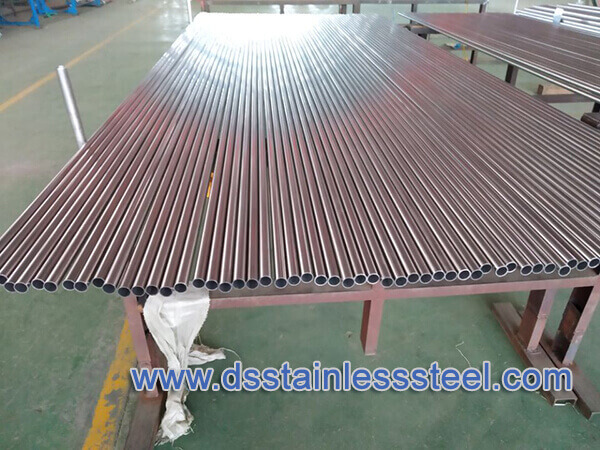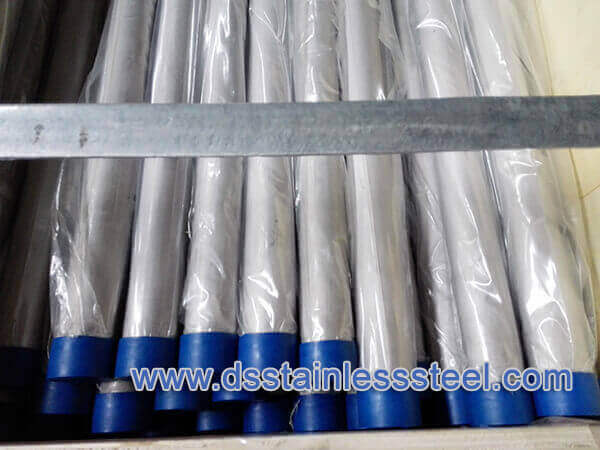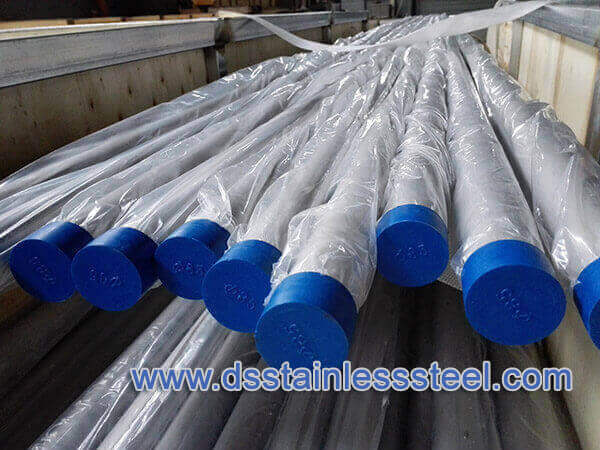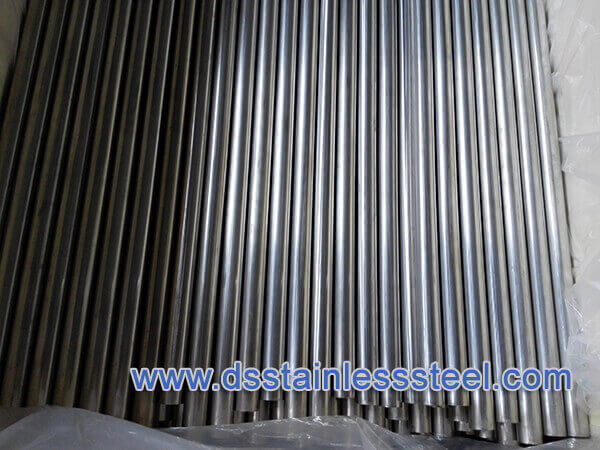
Boiler tube is a type of pipe used in boiler equipment to transfer heat energy within the boiler. A boiler is a thermal energy conversion device that converts the thermal energy produced by the combustion of fuel into steam or hot water for heating or to provide energy for industrial processes. Boiler tubes play an important role inside the boiler in transferring heat energy and exchanging heat between flue gas or gas and circulating water or steam.
ASTM A213 for the seamless tubes and A249 for the welded tubes are the main specifications for stainless steel boiler tubes. Tubes are processed by cold drawn, heat treated and pickling finishes, cleaning and smooth surfaces inside and outside should be made, quality tubes can stand in high pressure and high-temperature conditions. Boiler tube material selection is important, different grades suit different types of boilers, tubes have to meet complex boiler environments, like Heat Pass location and flow direction, boiler pressure, temperature, steaming rate, and boiler material, etc.
Types of Boiler Tube
- Welded Tuve – ASTM A249, ASME SA249
- Seamless Tube – ASTM A213, ASME SA213
- ASTM B163/SB163
- ASTM B704/SB704
Stainless Steel Grades:
- Austenitic: 304, 304L, 316, 316L, 316H, 316Ti, 317/317L, 347/347H, 321/321H, 310/S, 904L
- Ferritic: 409, 430, 439, 441, 434, 436, 444, 446
- Duplex: 2205, S31803, S32750, S32760
These stainless steels have high strength and good corrosion resistance in high temperate conditions, good properties result from varieties addition of alloys, and stainless steel boiler tubes can meet high pressure and temperature requirements.
Nickel Alloys
Boiler Tube Sizes
| Sizes, OD*T | Sizes, OD*T | Sizes, OD*T | Sizes, OD*T |
|---|---|---|---|
| 14*3 | 38*5.5 | 89*5 | 133*18 |
| 14*3.5 | 42*3 | 89*5.5 | 159*6 |
| 14*4 | 42*3.5 | 89*6 | 159*6.5 |
| 16*3 | 42*4 | 89*7 | 159*7 |
| 18*2 | 42*5 | 89*7.5 | 159*8 |
| 18*3 | 42*6 | 89*8 | 159*9.5 |
| 18*4 | 42*8 | 89*9 | 159*10 |
| 18*5 | 45*3 | 89*10 | 159*12 |
| 19*2 | 45*4 | 89*11 | 159*14 |
| 21*4 | 45*5 | 89*12 | 159*16 |
| 22*2.5 | 45*6 | 108*4.5 | 159*18 |
| 22*3 | 45*7 | 108*5 | 159*20 |
| 22*4 | 48*4 | 108*6 | 159*28 |
| 22*5 | 48*4.5 | 108*7 | 168*6 |
| 25*2.5 | 48*5 | 108*8 | 168*7 |
| 25*3 | 48*6 | 108*9 | 168*8 |
| 25*4 | 48*7 | 108*10 | 168*9.5 |
| 25*5 | 48.3*12.5 | 108*12 | 168*10 |
| 25*5.5 | 51*3 | 108*14 | 168*11 |
| 27*3.5 | 51*3.5 | 108*15 | 168*12 |
| 27*4 | 51*4 | 108*16 | 168*14 |
| 27*5 | 51*5 | 108*20 | 168*15 |
| 27*5.5 | 51*6 | 114*5 | 168*16 |
| 28*2.5 | 57*4 | 114*6 | 168*18 |
| 28*3 | 57*5 | 114*7 | 168*20 |
| 28*3.5 | 57*5.5 | 114*8 | 168*22 |
| 28*4 | 57*6 | 114*8.5 | 168*25 |
| 30*2.5 | 60*4 | 114*9 | 168*28 |
| 32*2.5 | 60*4 | 114*10 | 180*10 |
| 32*3 | 60*5 | 114*11 | 194*10 |
| 32*3.5 | 60*6 | 114*12 | 194*12 |
| 32*4 | 60*7 | 114*13 | 194*14 |
| 32*4.5 | 60*8 | 114*14 | 194*16 |
| 32*5 | 60*9 | 114*16 | 194*18 |
| 34*3 | 60*10 | 114*18 | 194*20 |
| 34*4 | 76*4.5 | 133*5 | 194*26 |
| 34*4.5 | 76*5 | 133*6 | 219*6.5 |
| 34*5 | 76*6 | 133*7 | 219*7 |
| 34*6.5 | 76*7 | 133*8 | 219*8 |
| 38*3 | 76*8 | 133*10 | 219*9 |
| 38*3.5 | 76*9 | 133*12 | 219*10 |
| 38*4 | 76*10 | 133*13 | 219*12 |
| 38*4.5 | 89*4 | 133*14 | 219*13 |
| 38*5 | 89*4.5 | 133*16 | 219*14 |
Boiler Tubes Characteristics:
- High-Temperature Resistance: The temperature inside the boiler is usually very high, and the boiler tube needs to be able to withstand the high-temperature environment to prevent deformation or damage.
- Corrosion resistance: There may be corrosive flue gases or steam inside the boiler, so boiler tubes need to have a certain degree of corrosion resistance to extend their service life.
- Strength and pressure resistance: Boiler tubes can withstand the high pressure generated inside the boiler to ensure its safe operation.
- Thermal conductivity: Boiler tubes need to efficiently transfer heat energy to the media, such as water or steam.
Boiler Tube Inspection
Steel tubes should be hydraulic tested to test their pressure resistance and quality for bearing fluid pressure, in the specified pressure does not leak, wetting or swelling for qualified, some steel tubes also according to the standard or demand side requirements for crimping test, flaring test, flattening test, and so on.
We have the capability and capacity to ensure the boiler tubes are in superior condition, with advanced inspection and testing procedures, standard tests include dimensional examination, visual checking, chemical composition, mechanical properties as well as non-destructive test 100% eddy current test.
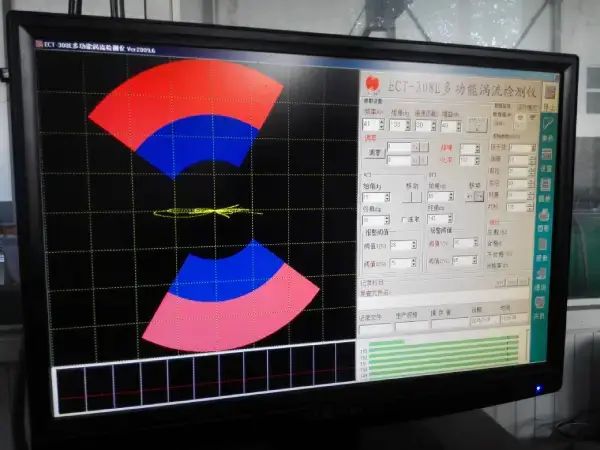
ECT
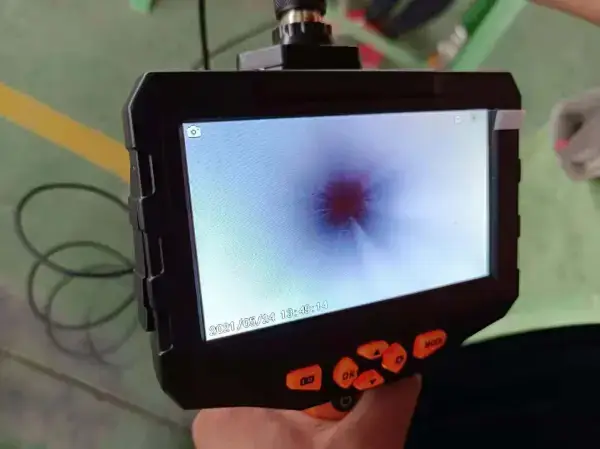
Surface Inspection
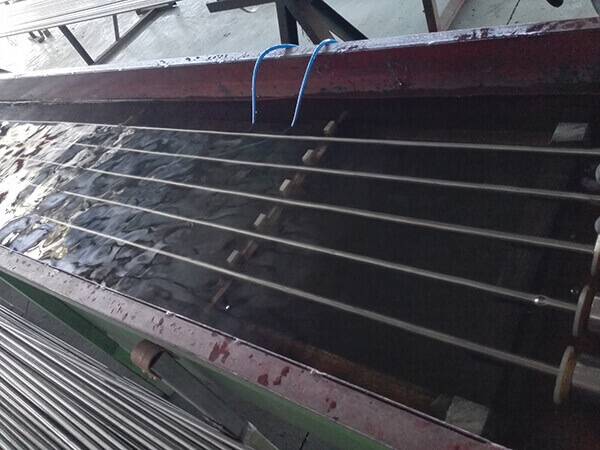
Pressure Test
Boiler Retubing Process
For each boiler tube, should perform NDT testing as needed. we use dye penetrant testing to expose areas of boiler tube sheet cracking. Old boiler tubes are removed along with the tube ends. Any minor tube sheet cracks are then repaired to the ASME code specifications. New boiler tubes (manufactured to meet or exceed specifications) are installed, rolled, beaded, and sometimes welded (in the hot pass).
Hydro-tests the boiler, witnessed by our authorized inspection agency. The boiler is then closed and prepared to fire using all new gaskets. We visually check scale and fit during this phase. We provide ultrasonic thickness testing, or borescope the inside of water tube boiler tubes as required.
Fire Tube Boiler
Fire-tube boiler is a type of boiler in which hot gas passes from the fire through one or more pipes that pass through a sealed water container. The heat of the gas is transferred through the wall of the tube through heat conduction, heating the water and eventually generating steam. Fire tube boilers are the third of the four historical types of boilers: low-pressure tank or “haystack” boilers, flue boilers with one or two large flues, fire tube boilers and high-pressure boilers with many small tubes
Water Tube Boiler
A water tube boiler is a type of boiler in which water circulates in tubes heated externally by the fire. The fuel is burned in the furnace to produce hot gas, which heats the water in the steam generation tube. In smaller boilers, the additional power generation tubes are separated in the furnace, while larger utility boilers rely on water injection tubes that make up the furnace wall to generate steam. High-pressure water tube boiler: The hot water then rises into the steam drum. Here, saturated steam is drawn away from the top of the drum.
Fire Tube vs Water Tube Boiler
Water tube boiler and fire tube boiler are defined by the different media inside the tube, water tube boiler is the tube inside the water, through the external flue gas convection/radiation heat transfer heating the water in the tube, fire tube is the tube inside the flue gas, so that the flue gas heats the medium outside the tube to achieve heat transfer, fire tube boiler structure is simple, the water and steam volume is large, the adaptability to the change of the load is good, the requirements for the quality of the water than the water tube boiler is lower than the water tube boilers are mostly used in small businesses Production process and domestic heating. Water tube boiler heating surface arrangement is convenient, heat transfer performance is good, in the structure can be used for large-capacity and high-parameter conditions. However, the requirements for water quality and operating level are high.
- Water tube boiler pressure to adapt to a wider range can break through the pressure limit and meet the steam supply requirements of more than 2.5MPa. Fire tube boiler by the material wall thickness and pressure limitations, for the pressure below 2.5MPa;
- Fire tube boiler for the pot shell boiler, to the current boiler manufacturers’ equipment, and tooling limitations, the manufacture of too large a fire tube boiler is more difficult, usually below 35t/h. The water tube structure of the boiler can achieve large-scale boiler, 35t / h above the boiler is usually water tube structure;
- The fire tube boiler has a compact structure, in the same output, the shape and equipment weight are lower than the fire tube boiler. Water tube boilers have more space for superheater arrangement due to their larger size, so water tube boilers occupy a relatively large boiler room.
Applications
- Chemical Processing
- Computer Data and Storage Rooms
- Food Processing
- Hospital Air Conditioning
- Marine Service Cooling
- Office & High-Rise Building Air Conditioning
- Petro Chemical Cooling
- Pharmaceutical Air Conditioning
- Power Plant Cooling
- University & College Air Conditioning
FAQ
Boiler tubes are usually made from carbon, alloy and stainless steel, and sometimes non-ferrous metals such as copper and nickel alloys are used. Materials will be selected based on operating temperature, pressure, corrosion resistance and other factors.
Selecting corrosion-resistant materials such as stainless steel and alloys with high oxidation resistance, implement a proper water treatment program to regulate pH and oxygen content and remove as many impurities from the water as possible, and apply a protective coating or lining to the pipe surface to form a barrier against corrosive elements, perform regular inspections, maintenance and cleaning to identify and solve corrosion problems promptly to ensure the safe and stable operation of boiler tubing.
Seamless boiler tubes have no welds and are resistant to high pressures and temperatures due to their uniform structure. In general, seamless boiler tubes are the preferred steel tubes for high-pressure boiler applications. Welded boiler tubes are welded from steel plates or coils with welded joints, so the strength at the welded joints may be reduced.

